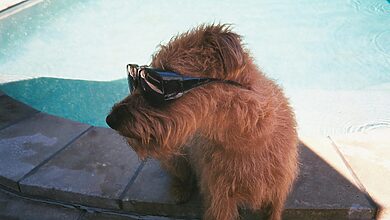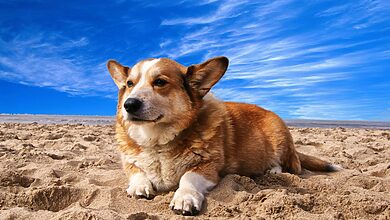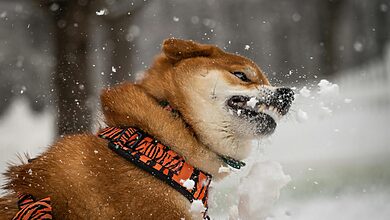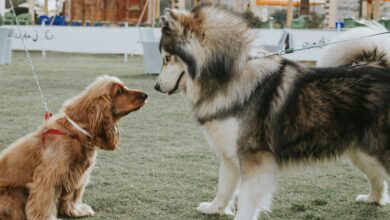Supercharge Your Puppy Training: 7 Proven Tips for Rapid Results
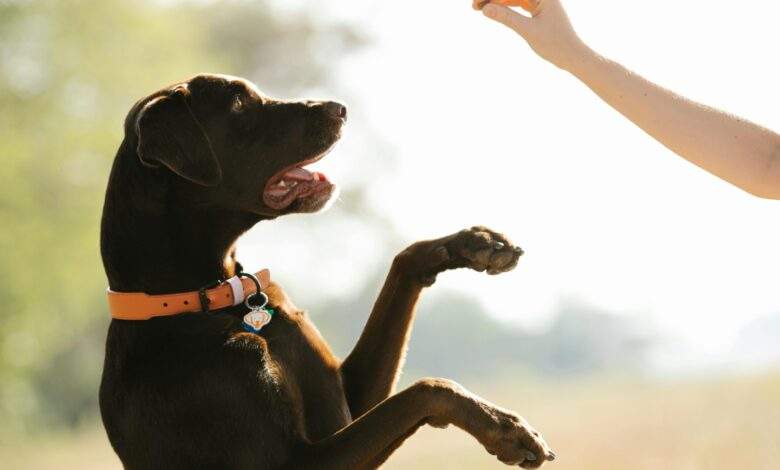
Table of contents
Bringing home a new puppy is an exciting time, but it also comes with its share of challenges. One of the most important tasks is training your furry friend to become a well-behaved and obedient companion. While puppy training can be time-consuming and frustrating, it doesn’t have to be. With the right approach and consistent effort, you can achieve rapid results and enjoy a harmonious relationship with your furry friend.
In this comprehensive guide, we’ll share seven proven tips to supercharge your puppy training journey. From establishing a strong foundation to mastering basic commands, these tips will help you navigate the early stages of puppyhood with ease and confidence. So, let’s dive in and unlock your puppy’s full potential!
🐾 Quick Tip: Consistency, patience, and positive reinforcement are the keys to successful puppy training!
1. Master the Art of Timing: The 3-Second Rule
Why It Matters:
Puppies have short attention spans and quickly associate rewards with their most recent actions. By providing immediate reinforcement within three seconds of the behavior, you help solidify desired actions. Delayed rewards can confuse your puppy, making it harder for them to understand what they did right.
Implementation Strategy:
- Keep Treats Easily Accessible: Use a treat pouch or keep treats in your pocket to reward quickly.
- Use Marker Words: Use phrases like “Yes!” or “Good!” as soon as your puppy performs the desired action to create a clear connection.
- Practice Quick Treat Delivery: Speed matters, so work on delivering treats within three seconds to strengthen the behavior you want.
🔍 Pro Tip: A treat pouch like the PetSafe Treat Pouch Sport is a great accessory to keep treats within reach, so you can always reward at the perfect time.
Related Resources:
- The Spruce Pets – Guide to using marker words effectively: thesprucepets.com
- Petco Treat Pouches – Keep rewards handy to make reinforcement quick and easy: petco.com
2. Strategic Crate Training: Your Puppy’s Safe Haven
Crate training offers your puppy a space of their own where they can feel safe and secure. When introduced gradually and positively, the crate becomes a powerful tool for managing your puppy’s behavior, assisting with potty training, and reducing anxiety.
Essential Steps:
- Choosing the Right Crate: Select a crate size that’s just big enough for your puppy to stand, turn, and lie down comfortably. Types include wire, plastic, and fabric, each offering different benefits based on your needs.
- Location: Place the crate in a quiet, comfortable area where your puppy can still see and hear family activity without feeling isolated.
Introduction Process:
- Days 1-2: Leave the crate door open, place treats or favorite toys inside, and feed meals near the crate to build positive associations.
- Days 3-5: Begin feeding meals inside the crate with short, door-closed sessions to build comfort.
- Day 6+: Gradually increase the amount of time your puppy spends in the crate, reinforcing it as a positive, safe space.
💡 Remember: Never use the crate as punishment. It should be a place of comfort, not a source of fear.
Related Resources:
- American Kennel Club – Detailed crate training tips and product recommendations: akc.org
- PetSmart Crates – Find various crate styles and sizes to suit your puppy’s needs: petsmart.com
3. Potty Training Success Formula
Potty training can be challenging, but a consistent schedule and positive reinforcement can make it a smooth process. Puppies thrive on routine, so setting regular times for bathroom breaks and rewarding outdoor successes are essential steps.
Schedule Basics:
- First Thing in the Morning: Take your puppy outside as soon as they wake up.
- After Meals, Naps, and Playtime: These activities stimulate the need to go.
- Before Bedtime and Every Two Hours: Regular outings prevent accidents and reinforce positive habits.
Key Success Factors:
- Consistent Feeding Schedule: Keeping meal times consistent will also help regulate potty times.
- Designated Potty Spot: Take your puppy to the same spot each time to reinforce the area as their bathroom.
- Immediate Rewards: Offer treats or praise right after they go in the correct spot.
- Supervision Indoors: Watch your puppy closely indoors to prevent accidents.
🏆 Achievement Timeline:
- 2-3 months: Basic understanding and fewer accidents.
- 4-6 months: Improved reliability.
- 6+ months: Greater consistency with outdoor potty habits.
Related Resources:
- PetMD – Potty training strategies and expert tips: petmd.com
- Chewy – Shop for training pads, treats, and supplies: chewy.com
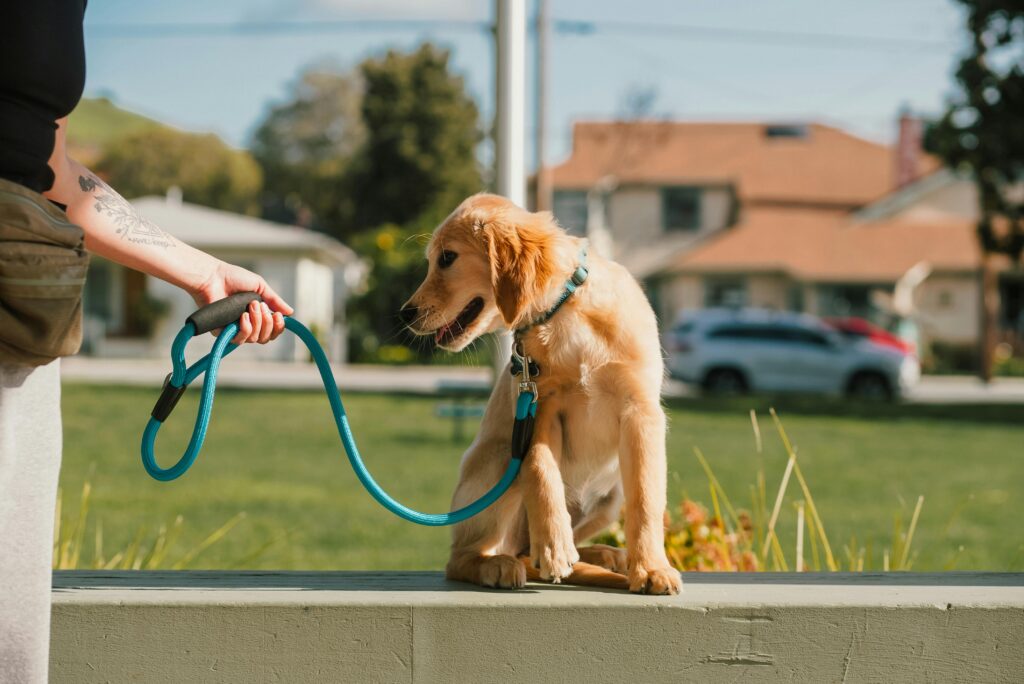
4. Socialization: The Critical Window
Socialization is crucial during the early weeks of a puppy’s life, with 3-16 weeks being the ideal period for introducing them to new experiences. Positive exposure to people, places, and sounds builds confidence and reduces fearfulness.
Exposure Checklist:
- People: Expose your puppy to people of different ages, appearances, and sizes.
- Animals: Introduce your puppy to other dogs and, if possible, cats or other friendly animals.
- Environments: Visit parks, beaches, pet stores, and other safe public areas.
- Sounds and Surfaces: Introduce various sounds (like vacuums) and surfaces (like grass, sand, and hardwood).
Safety Guidelines:
- Positive Experiences Only: Ensure all encounters are calm and positive to avoid fear.
- Monitor Comfort Level: Respect your puppy’s boundaries and don’t overwhelm them.
- Vaccination Protocol: Consult your vet to ensure your puppy’s vaccines are up-to-date before public exposure.
Related Resources:
- DogTime – Comprehensive guide on socializing puppies: dogtime.com
- ASPCA – Socialization tips and resources for young puppies: aspca.org
5. Basic Commands: The Foundation Five
Teaching basic commands like Sit, Stay, Come, Down, and Leave It are essential steps in creating a well-mannered dog. Start with short, frequent sessions and reward generously.
Command Tips:
- Sit: Hold a treat above your puppy’s nose, moving it backward to encourage sitting.
- Stay: Start with a few seconds, gradually increasing time as your puppy learns.
- Come: Use an excited voice, rewarding immediately when your puppy comes.
- Down: From a Sit position, lure your puppy into a Down and reward.
- Leave It: Place a treat under your hand, wait for them to disengage, then reward.
Related Resources:
- The Spruce Pets – Step-by-step training guides: thesprucepets.com
- K9 of Mine – Useful training videos and advice: k9ofmine.com
6. Exercise and Mental Stimulation Balance
Physical exercise and mental stimulation are critical for your puppy’s development and well-being. An under-stimulated puppy is more likely to develop problem behaviors, so create a balanced daily routine that includes both physical activity and mental challenges.
Daily Exercise Needs:
A good rule of thumb is five minutes per month of age, twice a day.
Mental Stimulation Ideas:
- Puzzle Toys and Interactive Games: Toys like Kong or Nina Ottosson puzzles.
- Training Sessions: Reinforce commands, introduce new tricks, or try scent games.
- Sniff Walks: Let your puppy explore different smells on a leash.
- Food-Dispensing Toys: Engage their mind by making them work for treats or kibble.
Related Resources:
- Outward Hound – Interactive puzzle toys: outwardhound.com
- Rover – Ideas for mentally stimulating activities: rover.com
7. Problem Behavior Prevention
Addressing problem behaviors like biting, jumping, barking, and chewing early on is essential for a well-mannered puppy. Prevention and redirection are more effective than punishment, so practice these techniques consistently.
Common Behavior Tips:
- Biting/Nipping: Redirect to a toy, use a firm “ouch,” and give brief time-outs if needed.
- Jumping: Ignore attention-seeking behaviors and reward calm interactions.
- Excessive Barking: Identify triggers, teach a “quiet” command, and reward calm behavior.
- Chewing: Provide plenty of chew toys and redirect when necessary.
Related Resources:
- Cesar’s Way – Tips for addressing common behavior issues: cesarsway.com
- Petfinder – Guide on training and behavior management: petfinder.com
Implementation Timeline
Week 1: Foundation
- Start crate and potty training, introduce simple commands.
Week 2: Building Blocks
- Add socialization, increase command duration, and begin leash training.
Week 3: Advancement
- Add distractions, combine commands, and introduce new environments.
Week 4: Reinforcement
- Expand training areas, strengthen behaviors, and maintain consistency.
📝 Track progress in a training journal. Note daily successes, challenges, training duration, and behavior changes.
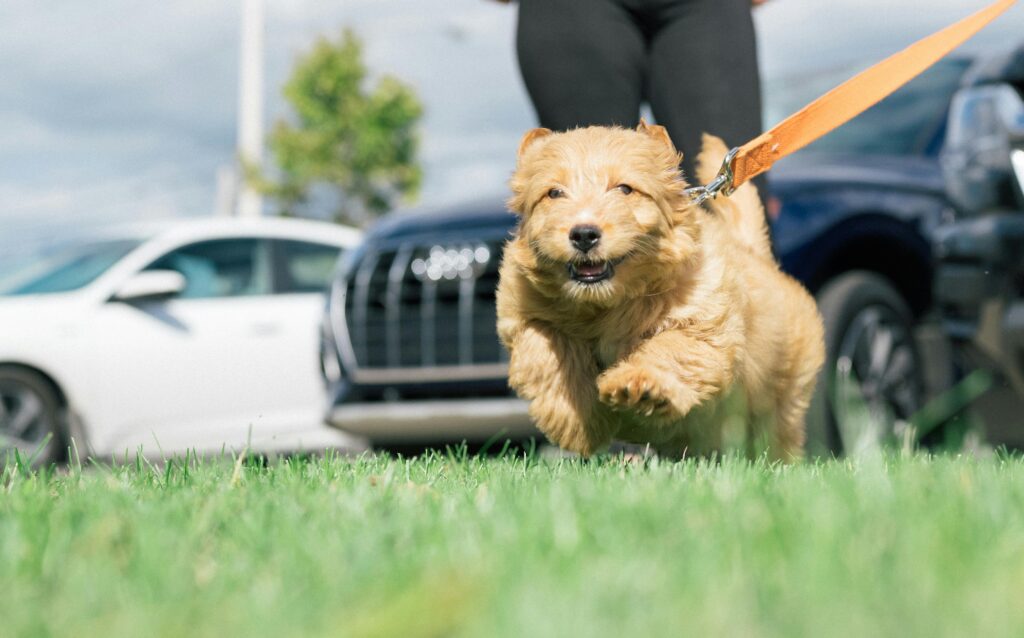
Conclusion
Training your puppy can be a rewarding experience, but it requires patience, consistency, and positive reinforcement. By implementing these seven proven tips, you can accelerate your puppy’s training progress and build a strong bond with your furry friend.
Remember, every puppy is unique, so be patient and adapt your training methods to suit your puppy’s individual needs. With consistent effort and positive reinforcement, you can transform your puppy into a well-behaved and loving companion.
So, what are you waiting for? Start your puppy’s training journey today and watch them thrive!
Potty training requires consistency and patience. Establish a regular routine, take your puppy outside frequently, and reward them for going potty in the right spot.
Want to know more about potty training? Check out our in-depth guide on effective potty training techniques.
Socialization is crucial for your puppy’s development. Expose them to different people, animals, and environments. Positive experiences will help them become well-adjusted dogs.
Looking for tips on socializing your puppy? Learn how to build your puppy’s confidence and social skills.
Start with the basics: sit, stay, come, down, and leave it. Use positive reinforcement techniques, such as treats and praise, to reward your puppy for obeying commands.
Short and frequent training sessions are more effective than long, infrequent ones. Aim for multiple short training sessions throughout the day.
Provide plenty of mental and physical stimulation, such as chew toys and training sessions. Avoid leaving your puppy alone for extended periods, as boredom can lead to destructive behavior.
Choose small, healthy treats that your puppy finds rewarding. Avoid treats that are high in sugar or fat.
Common behavior problems include excessive barking, chewing, and jumping. Address these issues with consistent training, positive reinforcement, and patience.




